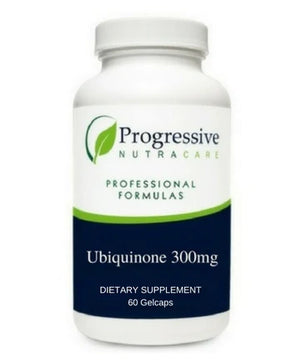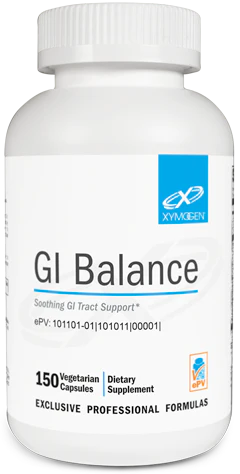Should I Rotate My Probiotics? What's Important About Switching Strains for a Healthy Microbiome

The popular opinion of rotating your probiotics comes from the thought that we need a wide variety of different strands of probiotic bacteria within our gut to help with digestion. It's a great thought, and there is merit to it.
But, there's so much more to the story.
Most people should be taking some kind of probiotic. The Standard American Diet does not contain enough fermented foods or a wide enough range of foods to resupply the bacteria in our guts with fresh stock adequately. And some people believe that once you take a probiotic, you don't have to worry about it again – that it lives with you for the rest of your life. However, that's not quite true.
Most bacteria in the gut only live 3 to 7 days. They do reproduce fast, but eventually, competition and environmental impacts hinder the population, and it might collapse. That's why we take in new probiotic bacteria because it helps replenish everything.
So, what kind of probiotics should you be taking? Should you be rotating through the different ones?
Yes, You Should Rotate Your Probiotics… And No, You Should Not!
The answer to rotating your probiotics depends on the type of probiotic you're taking and the quality. Let us explain.
Some studies show after a specific span of time, the benefits a person receives from taking a supplement does not improve. Therefore, it's reasoned that you don't need any one particular probiotic more than a couple of weeks to a couple of months. People vary on how long this is depending on the types of foods they eat, their age, and activity levels. Hence, a good reason to rotate.
Other studies show taking one particular strain of probiotics helps all of the different ones grow in your gut and throughout the rest of the body. Certain species of bacteria help muscle out harmful yeast, such as Candida, and other dangerous infections, such as the stomach flu. The benefits measure in how much the one supplemented probiotic helps the other bacteria in your gut. Hence, a good reason to not rotate.
You also want a broad diversity of different types of probiotics. We have 300 individual species found in our gut. The most common families include the Lactobacillus species (acidophilus, casei, fermentum, gasseri, johnsonii, paracasei, plantarum, rhamnosus, and salivarius) and Bifidobacterium species (adolescentis, animalis, bifidum, breve, and longum). Hence, a good reason to eat fermented foods to get your probiotics.
You won't find all 300 strains in any supplements. Most supplements contain 1 to 15 different strains, picking and choosing which ones are most marketable, not which work best.
Why Are You Taking A Probiotic?
Before you take any probiotic supplements, you should answer the question of why you're taking the supplement, to begin with. Many different reasons exist.
- Replenish the gut after antibiotics
- Ease digestion
- Decrease gas and bloating
- Lose weight
- Anxiety, depression, or mood swings
- Reduce autoimmune side effects
- Overcome other types of infections
Or, perhaps your reason is like so many others: they told you it was a good idea.
It truly is up to you as to why you are taking your probiotic supplements. As long as you are doing it to improve your health, it is a good reason.
The Quality Over Quantity Probiotic Debate
Most commercials are delighted to inform you of the incredibly high counts of probiotics contained in their supplements. Most contain billions of bacteria, but some are pushing into the trillion range.
Those are numbers most people can't imagine, especially once it's packed into a little, easy to swallow tablet.
Let's take a look at exactly what the bacteria have to go through to reach your intestine, where they can do some good. We recommend you read our Journey Through The Digestive System story to learn more about how food digests, and the different parts of your digestive system.
The biggest obstacle probiotic bacteria have to face when you take them is the acidic environment of the stomach. One reason for the low pH value of the stomach is to destroy pathogenic bacteria and viruses that we consumed with our food.
Then, it has to survive the various enzymes that break down protein and fat molecules. Since bacteria have an outer cell wall made of purely of fats and proteins, these enzymes could be fatal.
This means that the majority of probiotics you consume will die before they ever reach a point in your intestine where they can help you. In a cheap supplement that contains 1 billion probiotic bacteria, only 1,000 may survive when 1,000,000 are needed. Not very good odds.
Many manufacturers put more probiotic bacteria into their supplements because they chose less expensive methods of delivery. They know most will die, and just hope a few get through. Because the process is cheaper, they can make a higher profit selling a lower class item.
That's why you need to pay attention to quality. A quality supplement will have a method to protect the probiotic bacteria until it reaches your intestinal tract. This could be a slow-release formula, a special coating on the tablet or capsule, or various other methods.
You should always look for probiotic based on species and the way the bacteria are protected. Most of these probiotics are a little bit more expensive.
But, if you pay a little bit more for quality supplements, you can take it less often and get more benefits.
Food As Medicine – Why You Should Eat A Diverse Range of Probiotic Foods for Diversity
Probiotics, and most bacteria, can be found on plants and in the soil. Way back when, people found certain foods tended to create an acidic environment that prevents harmful bacteria from multiplying. It allowed them to preserve food longer.
Every culture in the world has some form of fermented food. It could be something as familiar as sauerkraut or Kimchi to some genuinely exotic delicacies like natto. But, everything relies on the probiotic bacteria preserving food.
If you're eating a wide variety of probiotic food, it may be possible not to need a probiotic supplement at all. However, most Americans rarely, if ever, consume any probiotic food. These are people who definitely need a supplement.
Here is a list of the different types of fermented foods found around the world. Some of these may be found in your regular grocery store, while others you may have to go through the internet or specialty stores. Please note that processing destroys the probiotics.
- Kefir
- Sauerkraut, Kimchi, & Other cabbage-based ferments
- Kombucha
- Natto
- Yogurt
- Kvass
- Cheese (raw)
- Apple Cider Vinegar (raw)
- Pickled Vegetables (un-pasteurized)
- Tempeh
- Miso
- Buttermilk (raw)
- Milk (raw)
Yogurt
Most people are familiar with yogurt. The creamy snack is convenient and tasty. However, many of the brands on the store shelves contain very few probiotics, mostly because of the processing.
Artificial coloring, artificial sugars, and other preservatives stop bacterial growth. If you're eating yogurt for the probiotic benefit, you won't get significant results choosing a yogurt that has any of these chemicals.
Choose organic yogurts. Most brands of organic yogurt contain several different species of probiotics and are free of the chemicals that kill the bacteria and cause harm to you.
Full fat, plain yogurt is a brilliant canvas. You could use different kinds of fruits or jellies for flavor. You can have granola, nuts, or chocolate for crunch. You can mix anything you want.
Here's the common strains of bacteria found in yogurts:
- Lactobacillus bulgaricus
- Streptococcus thermophiles
Some manufacturers will add other strains to add flavors, textures, or health benefits.
Cabbage
All cultures that experience cold winters grow cabbage. They are a food that ferments effortlessly and stores well. The Kimchi and sauerkraut we mentioned earlier are two examples of this.
How cabbage gets preserved, and what else is mixed in with it, varies from culture to culture, and even between families. So, if you find a variety of a cabbage-based ferment that's too spicy or to bitey, keep asking around, because other recipes abound.
Making your own sauerkraut or Kimchi is extremely easy. Here are two popular websites of recipes:
https://www.thekitchn.com/how-to-make-homemade-sauerkraut-in-a-mason-jar-193124
https://www.koreanbapsang.com/baechu-kimchi-napa-cabbage-kimchi/
If you purchase your sauerkraut, make sure it is raw and living. That means the sauerkraut is not pasteurized to kill the probiotic bacteria. Anything found in a can will be. If you purchase from a local vendor, mainly if they sell their sauerkraut in a mason jar, you will have to ask directly if they pasteurized it. If you're purchasing from the grocery store, the label should tell you whether there are active probiotics and the product received treatment.
Here are some examples of the type of bacteria found in cabbage:
- Leuconostoc mesenteroides
- Lactobacillus plantarum
- Lactobacillus brevis
- Pediococcus sp.
- Weissella sp.
- Enterococccus sp.
Fermented Glory of a Final Word
Whether you choose to eat delicious fermented foods or choose a supplement, stick to quality. In a supplement, look for a diverse range of species and a delivery method that helps ensure most of the probiotics get to where they can do the most good.
You don’t need to rotate your supplements just because. Stick to a good, better quality probiotic supplement and add in various fermented foods. That way, you get the best of both worlds.
- Nutracare Team







Comments 0